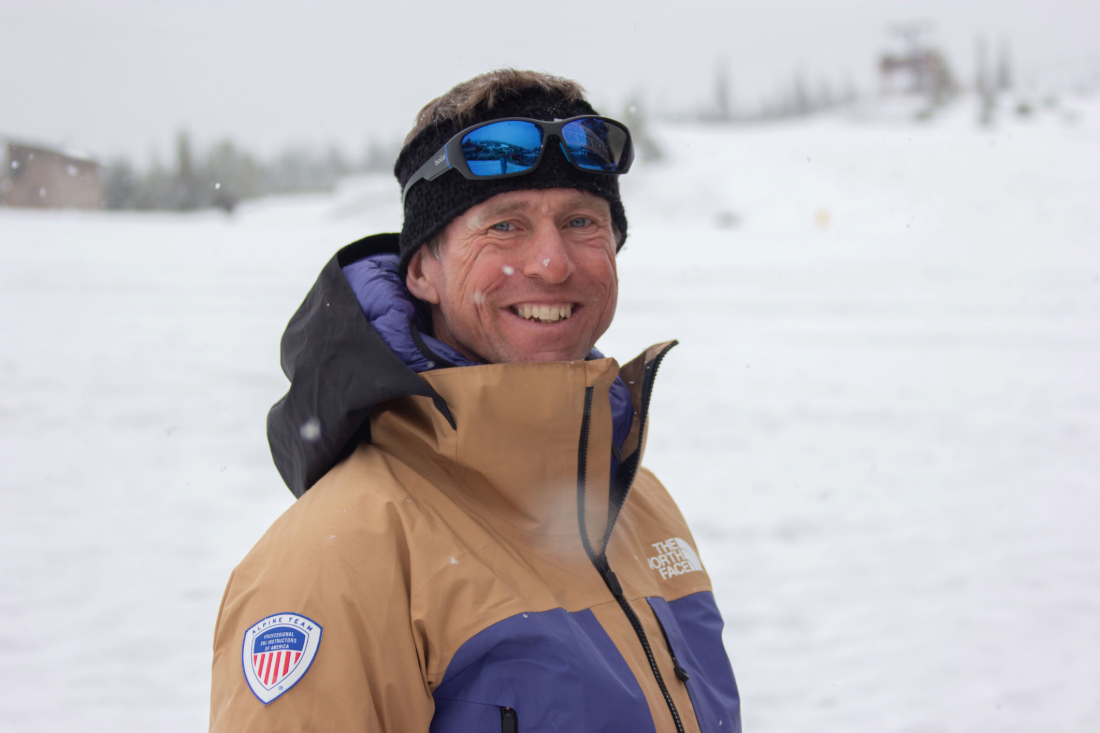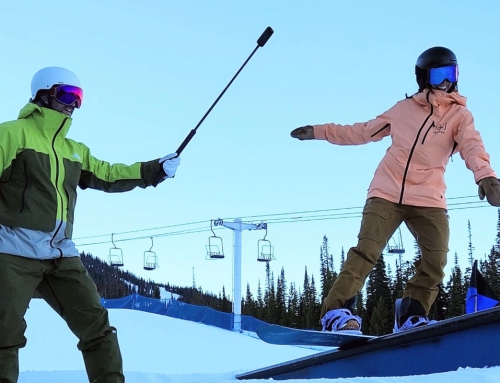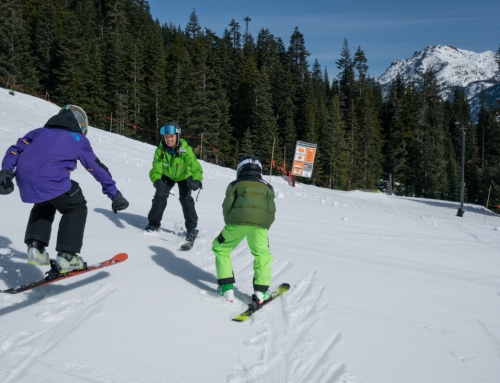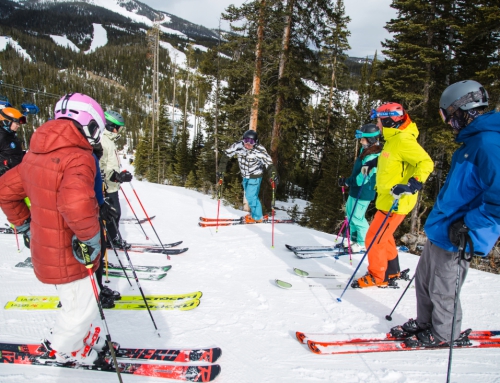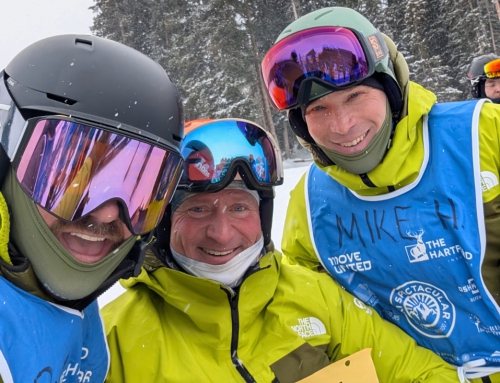Certification Secrets: Why National Team Member Joshua Fogg Says, ‘They Aren’t Really Secrets’
The “Certification Secrets” series features top instructors, examiners, and PSIA-AASI National Team members sharing their personal advice, experience, and insight on how you can start planning and practicing to reach your professional goals.
In the fourth installment of the series, PSIA Alpine Team member and Aspen Snowmass Training Director Joshua Fogg says one of the first things aspiring instructors should know is that, “They aren’t really secrets.”
“I think many candidates aren’t doing the most obvious things that have worked for decades – read the manuals, ask questions, be in good shape, get performance-oriented equipment, and practice a lot more than you think you need to, and then a bit more after that,” Fogg said. “People who can do that tend to pass exams.”
Q: Why would you recommend to other professional instructors that they aspire to gain advanced certification or specialist credentials?
A: PSIA-AASI is the pathway to gaining formal education in teaching snowsports. Like other professions, the education is tiered and designed to explore specific pathways of personal or professional interest.
Pursuing advanced certification or specialist credentials is where you learn the nuances of managing a wider variety of situations and customer desires. The education that you receive through this training provides you with a larger perspective of what is possible in the sport.
Armed with this perspective, your conversations with students change and have a longer-view approach to them. Instead of teaching them just “how to ski or ride,” you will find yourself talking about those first lessons as the first steps to a lifelong sport that can be enjoyed in a wide variety of ways.
Q: How would you set up a strategy for members to achieve advanced certification or specialist credentials?
A: The first step is to recognize why we have advanced certification and specialist credentials. They’re not designed to assess a person’s ability to teach beginners and novices better. They’re designed to assess a person’s ability to teach in the intermediate and advanced zones, in specific environments, like terrain parks, or with specific populations of students, like children.
The next step is to identify what the assessments include. Assessments have changed over time, and you’ll want to learn your own way to develop your skills. Find people who are involved in the assessments, either in the PSIA-AASI offices or Education Staff members. Even at areas without direct access to an Education Staff member, someone at your school might know an Ed Staff member, or someone who knows an Ed Staff member. Use your networking skills to learn from the best sources of information. You’ll need to discover your own pathway to success.
Third, crack open the manuals. Read them. Reflect on what you read. Then read it again. Connect with trainers, ski school directors, experienced instructors, etc., and ask them about the things you don’t understand. You might get different answers from different people. That’s OK. It will open up the conversation and create deeper learning. Be the best student you can be.
Practice. A lot. It takes a lot of practice to get good at the demonstrations that are part of advanced certification. Preparation is key. It’s a multi-season process for many people, and that is often overlooked. At the same time, get in really good shape. Skiing and snowboarding are sports and you are more likely to succeed if you treat them like sports. Be the best athlete you can be.
Q: What are some key resources – both personal and professional – you would recommend to help guide them?
A: Again, read the PSIA-AASI manuals. Watch great skiing and riding. There has never in the history of skiing and snowboarding been so much video content available. When you know what great skiing and riding looks like, then you know what you are trying to achieve and teach to others. It’s also the key to movement analysis. Be careful though: there are lots of ideas out there, and some of them are based in national systems other than our own. They might be presenting a good idea, but not something that is part of PSIA-AASI’s skiing models. Context is important.
Use gear that will help you perform at the assessments. Skis that are narrower than 90mm underfoot with minimal rocker work better in ski assessments. Alpine boots, not touring boots, perform better. It doesn’t have to be race gear, but it has to be good at performing on and off-piste. Wider and softer skis don’t allow for precise demonstrations or for you to notice when you aren’t being precise in your movements. Make sure you have tuned equipment so it’s easier to identify ineffective movements in your skiing and riding.
Q: What are some of the key takeaways from your own certification/specialist story – both good and bad – and what did you learn from them?
A: Be prepared. I never went to a certification or specialist assessment for “the experience.” I always went to pass. I started my career at a resort without access to examiners. There was one person with a Level III certification. I trained to ski slow and fast; big turns and small ones; I got really good at all of the little drills and exercises. The better I got at them, the better I got at skiing. From there, I learned lots of different ways to teach people and things to do to learn to ski better.
I planned two to three years out for my Cert II and III as a part-time instructor. I knew it was one thing to learn something cognitively, and that it took longer to make those learnings into regular movements or decisions in my teaching. It’s the difference between understanding and really owning the ideas.
Q: How do you build on your experiences if you don’t first achieve advanced certification or specialist credential?
A: Rather than try to fix everything scored on the assessment form, try to identify one to two key actions that would change all of the others. Be willing to let go of something that you think is “right.” Sometimes our interpretation of something gets in the way of us seeing the larger picture of skiing, riding, and teaching.
Q: How do you build on your successes if you do?
A: What made you successful at one level of certification might not make you successful for the next. Re-examine what you know, believe, and do. It’s the best part of passing – you can look at everything again without the pressure of the assessment. It’s when I’ve done the most learning. After passing my level III, everyone told me that now I could really start learning. I thought they were crazy at the time and couldn’t agree more now.
Q: What’s the one thing you know now that you wish you knew when you started on this journey?
A: Get your boots aligned by a professional who can check the lateral canting, the forward lean, ramp angle, everything. Fit is nice, price is a factor. But the benefits of boot alignment cannot be understated. Some things that misaligned boots do to skiers cannot be overcome by the skier, no matter how athletic you are.
This is more than finding someone to make your boots fit well and making a footbed. It’s truly looking at you and your boot and making sure the angles all work together. I didn’t do this in an age of straight skis. Every certification scorecard I have mentions it. And I ignored it until skis got a deeper sidecut, and I tried to join the Ed Staff. I wish I had listened and done it sooner. It might have saved me an ACL injury.
***
Read the first three “Certification Secrets” Q&As: Mount Snow, Vermont, Ski & Ride School Senior Manager Maureen Drummey, 2021 Education Excellence Award Recipient Stacey Gerrish, and PSIA-AASI Eastern Examiner Bonnie Kolber.
.

